This article needs additional citations for verification. (August 2013) (Learn how and when to remove this template message) |

Fighter kites are kites used for the sport of kite fighting. Traditionally most are small, unstable single-line flat kites where line tension alone is used for control, and an abrasive line is used to cut down the string/line of other kites.
Kite fighting is done in many countries, but is particularly associated with Afghanistan, Bangladesh, India, Indonesia, Nepal, Pakistan, Vietnam, Korea, Thailand, and Brazil.
Contents
Materials
In most traditional fighter kite manufacture, the skins of kites are made from a lightweight thin paper and the spars are usually made from a lightweight and flexible wood, usually bamboo.
In modern American fighters, the kite skins are made from a variety of synthetic materials – mylar, aircraft insulation (orcon or insulfab), nylon, and polyester sheeting. The spine may still be bamboo, but often along with the bow is constructed of fiberglass or carbon fibre.
Line
Historically, for most Asian type fighters, a thin cotton or hemp line is coated with a mixture of finely crushed glass and rice glue. In recent years, synthetic line has been coated with a variety of abrasives and stronger glue. Also, there have been some reports of metallic line being used. Some cultures use line that has metal knives attached to hook and cut the opponent's line.
Traditionally, players use a paste of some sort to toughen their line. The primary components of this include glue and crushed glass, but depending on personal preference other materials are added to improve the properties of the line.
In line touch competition, synthetic braided fishing line, 15 to 20 lb test, is used due to its low stretch and high strength for the line diameter and weight. Waxed cotton, linen line or Latex can also be used.
Names
- Spectra – A brand of fishing line used for American kite fighting.
- Power Pro – A very thin braided fishing line used for American kite fighting.
- Manjha – The cutting line used in India, Bangladesh and Pakistan.
- Tar – The cutting line used in Afghanistan.
- Hilo de competencia o Hilo Curado – The cutting line used in Chile.
- Dore – (India and Pakistan) The string used to fly the kite. The sharper the string, the better it is.
- Pench – When two or more kites are fighting to cut one another. (India)
- Kai Po Chhe – When kite fighting to cut another one and it cut the winner says it loud "Kai Po Chhe" to announce the victory!
- Manjho – The cutting lines /thread called Manjho in Rajasthan(India)
- Gelasan – The cutting line /thread used in Indonesia
- Cerol – The cutting line /thread used in Brazil
Bridle and tuning
Bridle position, spine curve, centre of gravity, and balance of tension on the spars all play a role in how the kite spins and tracks. Afghan and Indian fighter kites and their variants have their bridles attached in two places on the kite's spine. The first place is at the crossing of the bow and the spine. The second attachment is three-quarters to two-thirds of the total length of the spine from the nose of the kite. The length of the top line to the tow point is the length between the two bridle to spine connection points. The length of the bottom bridle to the tow point is between half an inch to two inches (1.2–5 cm) longer than the length of the two spine connections. The spine of the kite has a slight convex curve toward the face of the kite. To make the kite spin more, the upper bridle line is shortened: to make the kite spin less, the lower bridle line is shortened . Left and right tracking are adjusted by either placing weight on the tip of a wing, or by weakening the bow on the side that you want the kite to track towards. The design of the kite plays a role in the tendency for the kite to spin and pull, and how much wind the kite can handle. Bridling and tuning are only effective when the kite chosen is able to handle the amount of wind that it is being flown in. If the wind is so strong that the spine and bow are severely distorted, no amount of bridle tuning will help with making the kite controllable. A crude method of making a kite flyable in over-strong wind, used in India where the kites are cheap and regarded as disposable, is to burn small holes in the flying surface, typically using a cigarette.
Kite fighting
When the kite is flown with the line taut, the kite is deformed by the wind pressure, giving it a degree of stability. When the line tension is reduced, either by letting out more line or by the flyer moving into wind, the kite will begin to become unstable and begin to rock from side to side, or in extreme cases even spin. By reapplying tension at the right moment, the kite will move in the direction that the flyer requires.
Although a spool that allows rapid winding and release of line is used, often the flyer will fly the kite by holding the line instead of the spool, with one or more assistants to help manage the slack line between the flyer and the spool.
Line cutting contests
Many of these kites are flown with an abrasive coated line (manja). Most kites are flown with a set length of manja at the kite end. The manja is very sharp and to avoid getting hand injuries most competitors use ordinary string (saddi) for their hand position. Some cutting involves knives of some sort attached to the tail, line, or kite. Competition rules vary by geographical area. Two or more contestants fly their kites. The person who cuts the opponents line wins the fight. In multiple kite matches, the person with the last kite in the air is the winner.
The two most common types of cutting are done with abrasive coated line – release cutting or pull cutting. To release cut, once the lines are in contact, both parties start to play out line until one line is cut. In pull cutting, the flier quickly retrieves line until the opponents line is cut. There are many factors in who will win the event and include the size of the kite, the quality of the kite, the quality of the line, the quality of the abrasive on the line, the quality and size of the spool, the spool handler, initial contact, the skill of the person flying the kite, and the wind conditions.
Capture or grounding competition
Two or more kites are flown. Competitors try to capture their opponents kite and bring it to the ground. The person or team who succeeds is the winner.
Expert kite fighters are able to cut their opponents line (manjha) and then encircle the trailing line (lubjow) of the cut kite. Once secured, the winner can then fly both kites and pull in the prize. Those not involved in the kite flying can be "kite runners" (Once a kite is cut, it no longer belongs to anyone until caught and claimed by the kite runner.). Many children die every year when they run into the path of vehicles or fall off roofs or, occasionally, with the fibre glass string cutting the flier's fingers or neck. The glass on the string is said to give the kite "cutting teeth".
By country
The various countries where fighter kites are flown all have their own specific styles of kites, rules for fighting and traditions. In many cases there is a "season" or a special occasion particularly associated with kite flying.
Afghanistan
Kites used range from 0.5-meter to 1.5 meters across. The usual name for the sport is gudiparan bazi and for the cutting line tar. As elsewhere, the line is traditionally made with a cotton line and coated with a mixture of crushed glass and rice glue. However, nylon string with stronger glue is now often the preferred line. Kites can go up to 3,500 meters in height depending on the size of the kite.
From 1996 to 2001, the Taliban government in Afghanistan outlawed kite fighting, and kite flying, by declaring it "un-Islamic". After the fall of the Taliban government kite fighting has returned to the country.
Brazil
In Brazil, kite fighting is a very popular leisure activity for children, teenagers and even young adults, particularly boys and men. As in other countries with similar traditions, injuries are common and motorcyclists in particular need to take precautions. The traditional kite (or "pipa"), has pentagonal shape, but simple diamonds similar to fighter kites elsewhere are also very common.
Caribbean
Most Caribbean kites are hexagonal, flown with a tail, and instead of cutting with glass-coated line, use sharp objects (generally razor blades) attached to the tails to try to "koule" (Creole for "drop") other kites.
Variations of this style exist throughout the Caribbean – in Haiti, Cuba, Trinidad and Tobago, Curaçao and Surinam.
Chile
Fighter kites are known as volantín. They are square shaped, and made with light paper and bamboo sticks. Unlike other square fighter kites of the world, the Chilean volantín uses 3 support threads (two at the top and one at the bottom) for easier, more stable manoeuvre. Whilst used widely for decorative purposes, the tail of the Chilean volantín is not used during competitive matches. The Chilean volantín can also vary in size, ranging from ñecla as the smallest size available, to pavo as the largest. However, in the context of kite fighting medio pavo or medium-sized kites are the most popular choice due to their more balanced performance in terms of speed, strength, and accuracy. Practitioners of this activity usually begin fighting in September, when the spring winds are arriving to the Chilean coast. Clubs and professional associations, however, prefer to host tournaments throughout the drier summer months when the commercial kite season is over.
Chilean kite fighting practice include the use of a large reel, (carrete), for the manipulation and storage of the abrasive thread, and the use of wooden sticks for the manipulation of the carrete in turn. Therefore, it is possible for a skilled kite fighter to complete a match without ever touching the thread with their hands if their mastery of carrete usage is advanced enough. Since the mid 2000s, the use of carrete has become widespread in Latin America and Europe. Its convenience, durability and safety make it one of the most popular exports of the Chilean kite fighting culture.
India
Fighter kites are known as patang in India.[13] In many others, kite flying takes place mainly during specific festivals particularly the spring festival known as Basant, during Makar Sankranti and more recently on Indian Independence Day.[14]
Bangladesh
As part of the Shakrain festival, people mostly from south Dhaka city engage in kite fighting. They fly kites mostly from the rooftops. The festival is held in the last day of the Poush month.
Japan
The Nagasaki Hata is similar to the Indian Patang, and it believed to have been introduced into Japan, from Indonesia, by Dutch traders. It is highly manoeuvrable and fought with glass coated line in line cutting contests in a similar way to kite fighting in many other countries.
Another type of kite fighting in Japan uses very large kites requiring teams. In these contests cutting line is not used, but instead kites are forced down. The festivals occur at Shirone[15] and Hamamatsu.[16]
The Rokkaku is 1-2m high hexagonal kite fought with teams of players flying each kite. Both the Rokkaku and the smaller rectangular Buka have been adopted and further developed by western kite enthusiasts.
Korea
The Korean fighter kite, the bang-pae yeon[17] is a rectangular, bowed "shield" kite with a hole in the middle of the sail. The frame uses five bamboo spars—one each across the top and the "waist" of the kite, a "spine," and two diagonals.
Although cutting line and fights are similar to other Asian fighter kites, a large spool is always used.[18][19]
Nepal
Kite fighting in Nepal is especially active during the festival of Dashain. The skies are filled with colourful kites called changas, made from Nepali lokta paper. The line used is coated in crushed glass to cut through the lines of rival kites. When a rival line has been cut, the victorious team shouts "chet" to claim their win over the other team.
Pakistan
Kite fighting is common in all over Pakistan, but mainly concentrated in cities of Punjab and Sindh region including Lahore, Faisalabad, Gujranwala, Karachi, Islamabad etc. While city of Lahore is considered as the capital of kite battling in South Asia. Kite flying is considered as the culture of Lahore. In the past, kite battling had a status of sports in Lahore, and those kite flyers were termed as "Kh
Watch movie Patang online on Amazon
Watch movie Patang online
Watch The Movie On PrimeShootout At Lokhandwala Full HD Movie Download
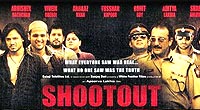
A Wednesday Full HD Movie Download

Zulm Ki Zanjeer Full HD Movie Download
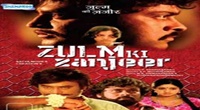
Saaz Full HD Movie Download

Main Sunder Hoon Full HD Movie Download

Duet Full HD Movie Download

Dus (2005) Full HD Movie Download
.jpg)
Hum Se Hai Zamana Full HD Movie Download
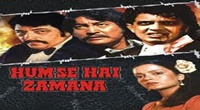
New Delhi Full HD Movie Download

Aandhi Toofan (1985) Full HD Movie Download
.jpg)
Aji Bas Shukriya Full HD Movie Download

Mylari Full HD Movie Download

Apathbhandavudu Full HD Movie Download

Karma Police Full HD Movie Download

Harry Potter and the Order of the Phoenix Full HD Movie Download

The Matrix Revolutions Full HD Movie Download

Alakadalinakkare Full HD Movie Download

Anjali Full HD Movie Download
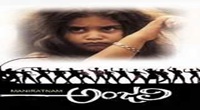
Ravi I Love You Full HD Movie Download
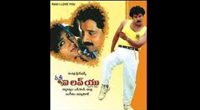
Palleturi Pidugu Full HD Movie Download

Geetanjali Full HD Movie Download

Download latest Movie from bollywood
- 1> baaghi 3
- 2> THE SKY IS PINK MOVIE FULL STORY AND REVIEW
- 3> Luka Chuppi
- 4> TO ALL THE BOYS I’VE LOVED BEFORE
- 5> Kabir Singh
- 6> Street Dancer 3D
- 7> Simmba
- 8> Gone Girl
- 9> The Girl Who Lived
- 10> Ludo
- 11> DILWALE DULHANIA LE JAYENGE
- 12> GUILTY
- 13> The Godfather
- 14> Adventures of Rusty
- 15> Sooryavanshi
- 16> Satyameva Jayate 2
- 17> Thappad
- 18> Bhool Bhulaiyaa 2
- 19> KGFChapter 2
- 20> Mardaani 2
- 21> Pinjar
- 22> Shivaji maharaj
- 23> Ek Villian 2
- 24> Hungama 2
- 25> Divergent
- 26> Mumbai Saga
- 27> The Internship
- 28> HIT (telugu)
- 29> Panga
- 30> The perfect date
- 31> 16 December
- 32> Gopala Gopala (Telugu)
- 33> Brahmastra
- 34> Gangubai Kathiawadi
- 35> Manmadhudu
- 36> Nenu local
- 37> Mahanati
- 38> Shatamanam bavathi
- 39> Lagaan
- 40> After
- 41> MOM
- 42> Shamshera
- 43> Raguvaran BTech
- 44> Khakee
- 45> The villain
- 46> OM
- 47> Mr. perfect
- 48> Bueatifull mind
- 49> Hichki
- 50> Gabbar Singh
- 51> Jogi
- 52> Before Sunrise
- 53> Before Sunset
- 54> Before Midnight
- 55> The Big Bull
- 56> Top Gun: Maverick
- 57> The Purge
- 58> The Sky is Pink
- 59> Laxmmi Bomb
- 60> Sadak 2
- 61> Sufna
- 62> Prithviraj
- 63> PK
- 64> Coolie No 1(2020)
- 65> Black Widow
- 66> Dear Zindagi
- 67> Dil Bechara
- 68> PHIR HERA PHERI
- 69> WAR
- 70> Dostana
- 71> RRR: Roudram Ranam Rudhiram
- 72> Maidan
- 73> Dabbang 3
- 74> Chhalaang
- 75> life as we know it
- 76> SherShaah
- 77> Sandeep Aur Pinky Faraar
- 78> Event Horizon
- 79> 83
- 80> Radhe: Your Most Wanted Bhai
- 81> Gunjan Saxena: The Kargil Girl
- 82> Mr India
- 83> Vivah
- 84> Anokha Bandhan
- 85> Ghost
- 86> Bhoot: Part One - The Haunted Ship
- 87> Haseen Dilruba
- 88> Laal Singh Chaddha
- 89> Qismat
- 90> Rajput
- 91> Drive
- 92> Dil Chahta Hai
- 93> Dil Ki Baazi
- 94> Dil Ka Rishta
- 95> Teesri Manzil
- 96> Dil
- 97> Love Aaj Kal
- 98> Khaali Peeli
- 99> Bunty Aur Babli 2
- 100> Atrangi Re
- 101> Gulabo Sitabo
- 102> Jodi
- 103> Suraj Pe Mangal Bhari
- 104> Deewana
- 105> Attack
- 106> Sardar Udham Singh
- 107> Toofan
- 108> THE LOVEBIRDS
- 109> Jersey
- 110> Ginny Weds Sunny
- 111> Thalaivi
- 112> Shiddat
- 113> Angels vs Zombies
- 114> Koi Mil Gya
- 115> Thank God
- 116> Bhuj: The Pride of India
- 117> Hum Aapke Hain Kaun
- 118> The Platform
- 119> Bird Box
- 120> Roohi Afzana
- 121> Torbaaz
- 122> Nikamma
- 123> World War Z
- 124> Extraction
- 125> Train to Busan
- 126> Life of Pi
- 127> SHAADI MEIN JROOR AANA
- 128> Himmat Aur Mehnat
- 129> To All The Boys: P.S. I Still Love You
- 130> Mimi
- 131> Good Newwz
- 132> Shubh Mangal Zyada Saavdhan
- 133> Raabta
- 134> Harry Potter and the Philosopher's Stone
- 135> Harry Potter and the Chamber of Secrets
- 136> Chhapaak
- 137> War of the Worlds
- 138> Harry Potter and the Prisoner of Azkaban
- 139> Harry Potter and the Goblet of Fire
- 140> MURDER MYSTERY
- 141> Shakuntala Devi
- 142> Bachchan Pandey
- 143> Jayeshbhai Jordar
- 144> Sheer Qorma
- 145> Saina
- 146> 'O' Pushpa I hate tears
- 147> Kedarnath
- 148> MS Dhoni The Untold Story
- 149> Chhichhore
- 150> Badhaai Ho
- 151> Unstoppable
- 152> Oz the Great And Powerful
- 153> The Girl on the Train
- 154> Haathi Mere Saathi 2020
- 155> The Conjuring: The Devil Made Me Do It
- 156> Gandhi Se Pehle Gandhi
- 157> The Song of Scorpions
- 158> Srimanthudu
- 159> Hello Guru Prema Kosame
- 160> Beauty and The Beast
- 161> Black Panther
- 162> Charlie and the Chocolate Factory
- 163> Bole Chudiyan
- 164> Fidaa
- 165> Duvvada Jagannadham
- 166> Bruce Lee: The Fighter
- 167> Hyper
- 168> Yaara
- 169> Red (2020)
- 170> Shivam
- 171> That Is Mahalakshmi
- 172> Nishabdham
- 173> Aashram 2020 web series
- 174> Laxmii
- 175> Mismatched
- 176> STUDENT OF THE YEAR 2
- 177> NAIL POLISH
- 178> Ramprasad Ki Tehrvi
- 179> KAAGAZ
- 180> 12 o Clock
- 181> The Power
- 182> bolo hau
- 183> Tribhanga
- 184> JAMUN
- 185> Madam Chief Minister
- 186> Maasaab
- 187> Aadhaar
- 188> Tanhaji
- 189> Bhaagi 3
- 190> Bhootnath
- 191> MALANG
- 192> Jai Mummy Di
- 193> Haathi Mere Saathi 2021
- 194> Shakeela
- 195> Unpaused
- 196> Annayya
- 197> Vamsoddharakudu
- 198> Mrugaraju
- 199> Narasimha Naidu
- 200> Sankranti
- 201> Manasu Maata Vinadhu
- 202> Anjaane
- 203> Apaharan
- 204> Bachke Rehna Re Baba
- 205> Bewafaa
- 206> Roohi
- 207> Radhe
- 208> Zindagi Khoobsoorat Hai
- 209> Yeh Mohabbat Hai
- 210> Yeh Kya Ho Raha Hai?
- 211> The Tomorrow War
- 212> DehradunDiary
- 213> Meri Shaadi Karaoo
- 214> Matruu Ki Bijlee Ka Mandola
- 215> No One Killed Jesica
- 216> Aag Ka Goola
- 217> Eight Million Dollars
- 218> Three Hundred
- 219> Cats and Dog
- 220> Decoy
- 221> Gold Rush
- 222> You Have Got Mail
- 223> Final Destination three
- 224> Tofan
- 225> Jungle
